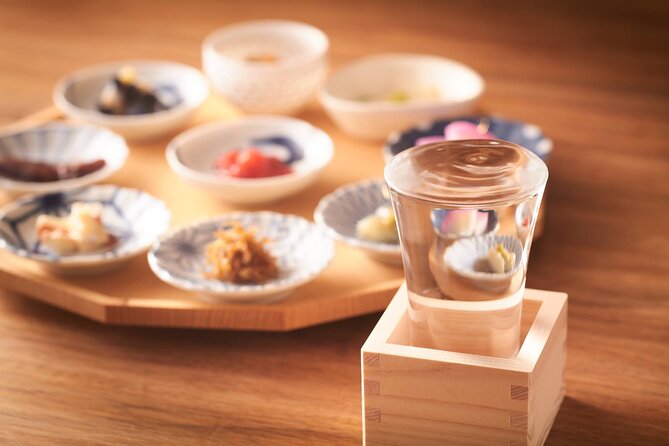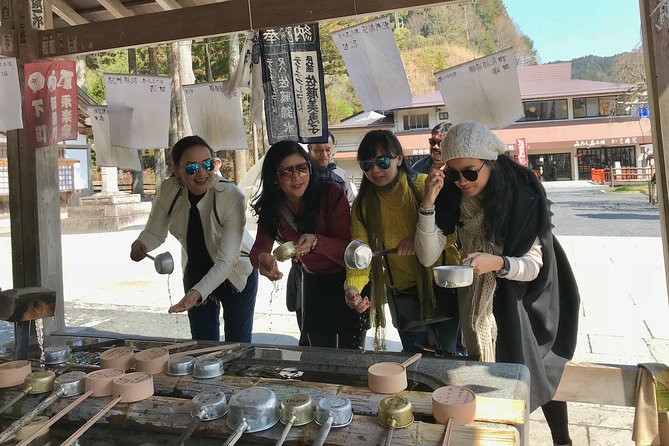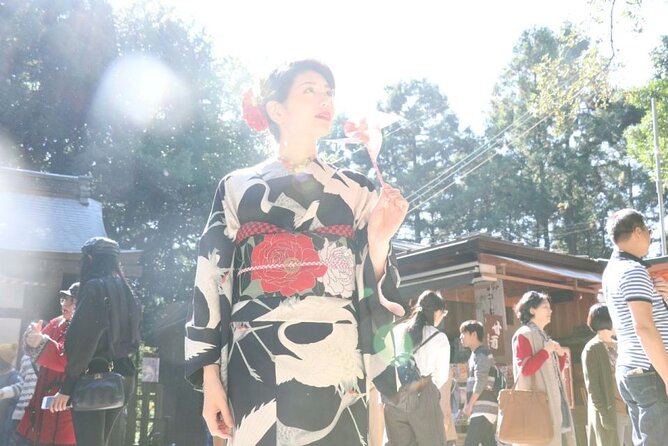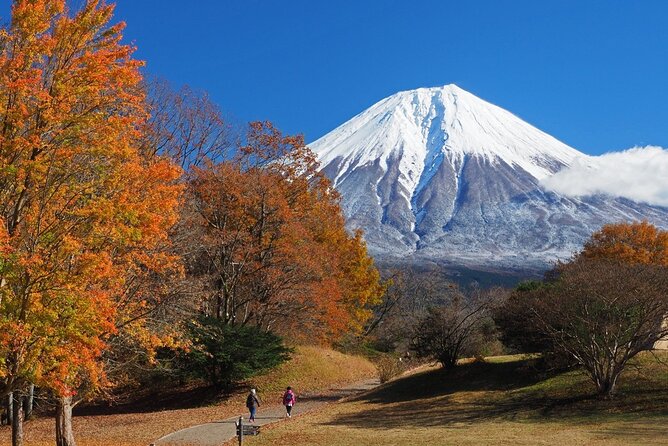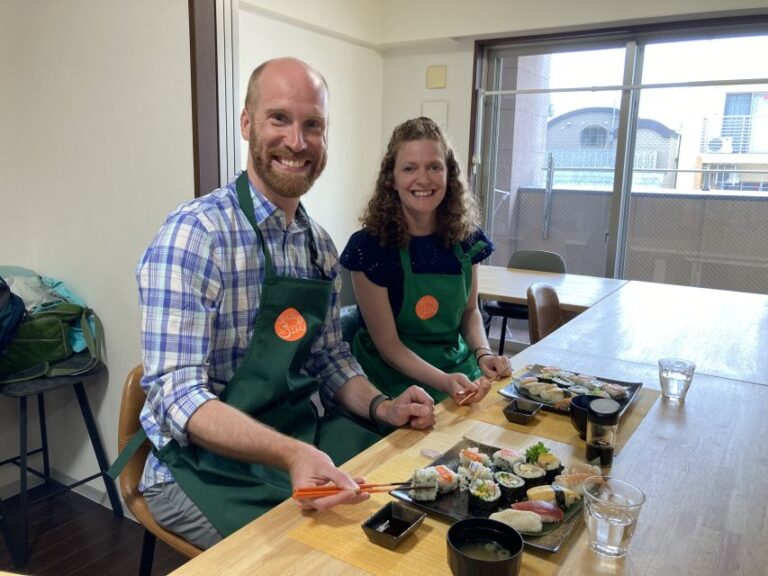Discover the fascinating world of sake tasting with the guidance of a sake expert in the ‘Taste&Learn Main Types of Authentic Sake’ experience. Despite the misconception that sake is a complex and intimidating beverage, this activity aims to make it accessible to all.
Participants will have the opportunity to explore the main types of authentic sake in an engaging and informative manner. From the history and brewing process to tasting techniques and food pairings, this immersive journey will provide a comprehensive understanding of this traditional Japanese drink.
So, whether you’re a sake connoisseur or a novice, this experience promises to be a delightful and educational adventure for everyone’s palate.
Quick Takeaways
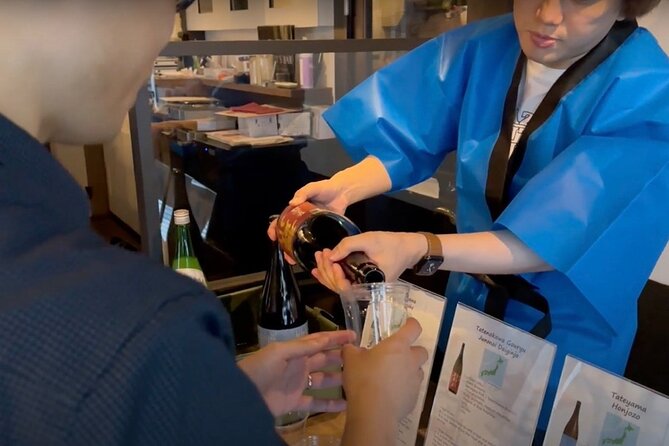
- The activity is offered by Best Sake Experience Tokyo and involves tasting and learning about authentic sake with a sake expert.
- The price for the activity starts from £23.23 and varies depending on the group size.
- The meeting point is located at #302, Sanki Building 3F, 4-10-6, Tsukiji, Chuo-ku, Tokyo, Japan.
- The activity includes alcoholic beverages and snacks.
History of Sake

The history of Sake traces back centuries, encompassing the rich traditions and cultural significance of this renowned Japanese beverage.
Sake, also known as Nihonshu, has been a part of Japanese culture for over 2,000 years. The production techniques of Sake have evolved over time, but the basic process remains the same.
Sake is made from rice that has been polished to remove the outer layers, leaving behind the starchy core. The rice is then fermented with water and a special type of yeast called koji. The fermentation process can take anywhere from a few weeks to several months, depending on the desired flavor and quality of the Sake.
Sake holds a special place in Japanese culture, often being used in religious ceremonies and celebrations. It’s also commonly enjoyed with traditional Japanese cuisine.
The history and tradition behind Sake make it a truly unique and cherished beverage in Japan.
Sake Brewing Process
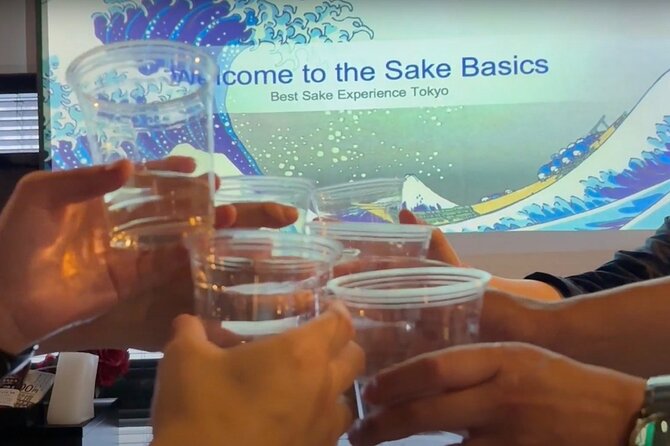
The brewing process of Sake, a renowned Japanese beverage with a history dating back over 2,000 years, involves the fermentation of polished rice with water and a special yeast called koji. Sake brewing techniques and production methods have evolved over the centuries, resulting in different styles and flavors of this beloved drink. To give you a glimpse into the fascinating world of Sake production, here is a table highlighting three key steps in the brewing process:
| Step | Description | Purpose |
|---|---|---|
| 1 | Rice Polishing | Removes outer layers to expose the starchy core |
| 2 | Washing and Soaking | Cleans the rice and prepares it for steaming |
| 3 | Fermentation and Maturation | Converts rice starch into alcohol with the help of koji |
These steps are just a snapshot of the intricate and meticulous process that goes into creating Sake. From the careful selection of rice to the precise timing of fermentation, each detail contributes to the final product’s unique taste and quality. By understanding the sake brewing process, you can deepen your appreciation for this ancient beverage and the expertise required to produce it.
Different Types of Sake
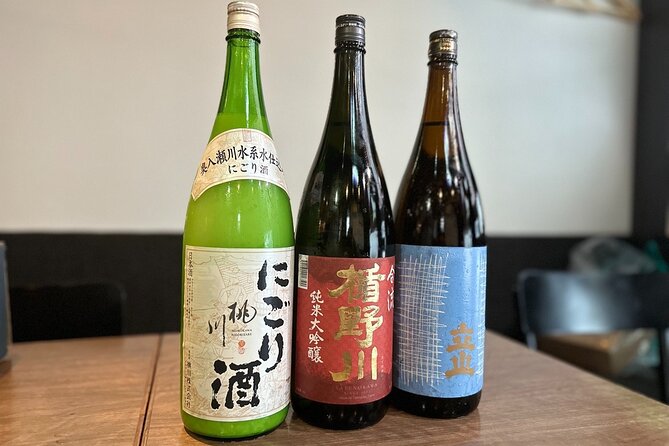
To explore the world of Sake further, let’s delve into the various types of this authentic Japanese beverage.
Sake production involves the fermentation of rice, water, yeast, and koji mold. However, the specific types of rice, yeast, and brewing techniques used can result in different flavors, aromas, and textures.
One popular type of sake is Junmai, which is made purely from rice, water, yeast, and koji mold without any added alcohol.
Another type is Ginjo, which is characterized by its fruity and floral flavors and is made using a special fermentation process that involves polishing the rice to remove the outer layers.
There’s also Daiginjo, a premium sake that undergoes an even more rigorous polishing process, resulting in a refined and delicate flavor profile.
These different types of sake offer a wide range of options for sake appreciation and can be enjoyed on their own or paired with various dishes.
Tasting Techniques

How can one effectively experience and appreciate the different flavors and nuances of authentic sake? Sake tasting tips and understanding the optimal serving temperature are key factors in enhancing the sake tasting experience. Here are some tips to help you make the most of your sake tasting:
| Sake Tasting Tips | Sake Serving Temperature |
|---|---|
| Use a proper sake cup or glass to enhance the aroma and taste. | Serve chilled sake in a refrigerator for a crisp and refreshing taste. |
| Observe the color and clarity of the sake before tasting. | Warm sake to room temperature or slightly above to bring out the rich and complex flavors. |
| Take small sips to fully appreciate the flavors and textures. | Experiment with different serving temperatures to find your preferred taste. |
| Take note of the aroma, sweetness, acidity, and umami of the sake. | Enjoy the journey of discovering the unique characteristics of each sake. |
Food Pairings With Sake

When pairing sake with food, it’s important to consider the flavors and characteristics of the sake to enhance the dining experience. Sake, a traditional Japanese rice wine, has a wide range of flavors that can complement different types of cuisine.
The food pairings with sake are influenced by the production process of sake itself. Sake production involves the fermentation of rice, which results in a beverage with a unique taste profile. The different types of sake, such as Junmai, Ginjo, and Daiginjo, have varying levels of complexity and aroma.
Junmai sake, for example, with its rich and full-bodied flavor, pairs well with hearty dishes like grilled meats and stews. On the other hand, the delicate and floral notes of Ginjo sake make it a great match for seafood and light salads.
Sake Etiquette and Traditions

Sake etiquette and traditions play a significant role in enhancing the enjoyment and appreciation of this traditional Japanese rice wine. To fully experience the rich flavors and aromas of sake, it’s important to follow certain practices and customs. Here are three key aspects of sake etiquette and traditions:
- Sake Serving Temperature: Sake is traditionally served at various temperatures, each bringing out different characteristics of the beverage. It can be enjoyed cold, room temperature, or warmed, depending on the type of sake and personal preference. The serving temperature greatly affects the taste and aroma, so it’s essential to serve and enjoy sake at the appropriate temperature.
- Sake Glassware: The choice of sake glassware is also important in the sake-drinking experience. The most common type of sake glass is a small ceramic or glass cup called a ‘ochoko.’ This allows for better appreciation of the aroma and flavor. Plus, there are specialized sake glasses, such as the ‘tokkuri’ (a tall, slender flask) and the ‘guinomi’ (a small, wide-mouthed cup), which are used for specific types of sake.
- Rituals and Customs: Sake-drinking in Japan often involves rituals and customs that add to the overall experience. For example, it’s customary to pour sake for others before pouring for oneself, and to hold the sake cup with both hands when receiving a pour. These practices show respect and appreciation for the sake and the company of others.
Choosing and Buying Sake

One important consideration when selecting sake is the quality of the rice used in its production. The type of rice determines the flavor and aroma of the sake. There are two main categories of sake rice: table rice and brewing rice. Table rice is commonly consumed as a staple food, while brewing rice is specifically cultivated for sake production. Brewing rice has larger grains and a higher starch content, which is essential for the fermentation process.
Along With rice, sake is made with other brewing ingredients such as water, koji (a type of mold), and yeast. The quality of these ingredients also plays a role in the final product.
To help you make an informed decision when buying sake, here is a table highlighting the different serving temperatures and their characteristics:
| Serving Temperature | Characteristics |
|---|---|
| Cold (5-10°C) | Crisp, refreshing, and aromatic |
| Room temperature (15-20°C) | Balanced and full-bodied |
| Warm (35-40°C) | Mellow and smooth |
| Hot (45-50°C) | Rich and bold |
Frequently Asked Questions

Is Transportation Included in the Price of the Activity?
Transportation is not included in the price of the activity. Participants are responsible for their own transportation to and from the meeting point. Non-alcoholic options are not specified in the activity details.
Are Non-Alcoholic Beverages Available for Those Who Do Not Drink Alcohol?
Yes, non-alcoholic options are available for those who do not drink alcohol. The activity offers alternatives to alcoholic beverages, ensuring that everyone can enjoy the experience of tasting and learning about authentic sake.
Is There a Minimum Age Requirement for Participants?
The minimum age requirement for participants in this activity is not specified. However, it is important to note that participants must meet the legal drinking age for alcohol consumption in the country where the activity takes place.
Can I Bring My Own Snacks or Food to the Activity?
Yes, participants can bring their own snacks or food to the activity. However, it’s important to note that there may be food restrictions or guidelines set by the organizer, so it’s best to check beforehand.
Is There a Dress Code for the Activity?
There is no specific dress code mentioned for the activity. However, it is always recommended to dress comfortably and appropriately. Participants must be of legal drinking age to participate in the sake tasting.
The Sum Up
Experience the art of sake tasting with Best Sake Experience Tokyo and embark on a delightful journey for the senses. Led by a sake expert, you will have the opportunity to learn about the history, production, and flavors of this traditional Japanese beverage.
With a starting price of £23.23, this immersive activity includes alcoholic beverages, snacks, and a chance to try different types of authentic sake.
Don’t miss out on this unique and educational experience that has received rave reviews from satisfied participants.

